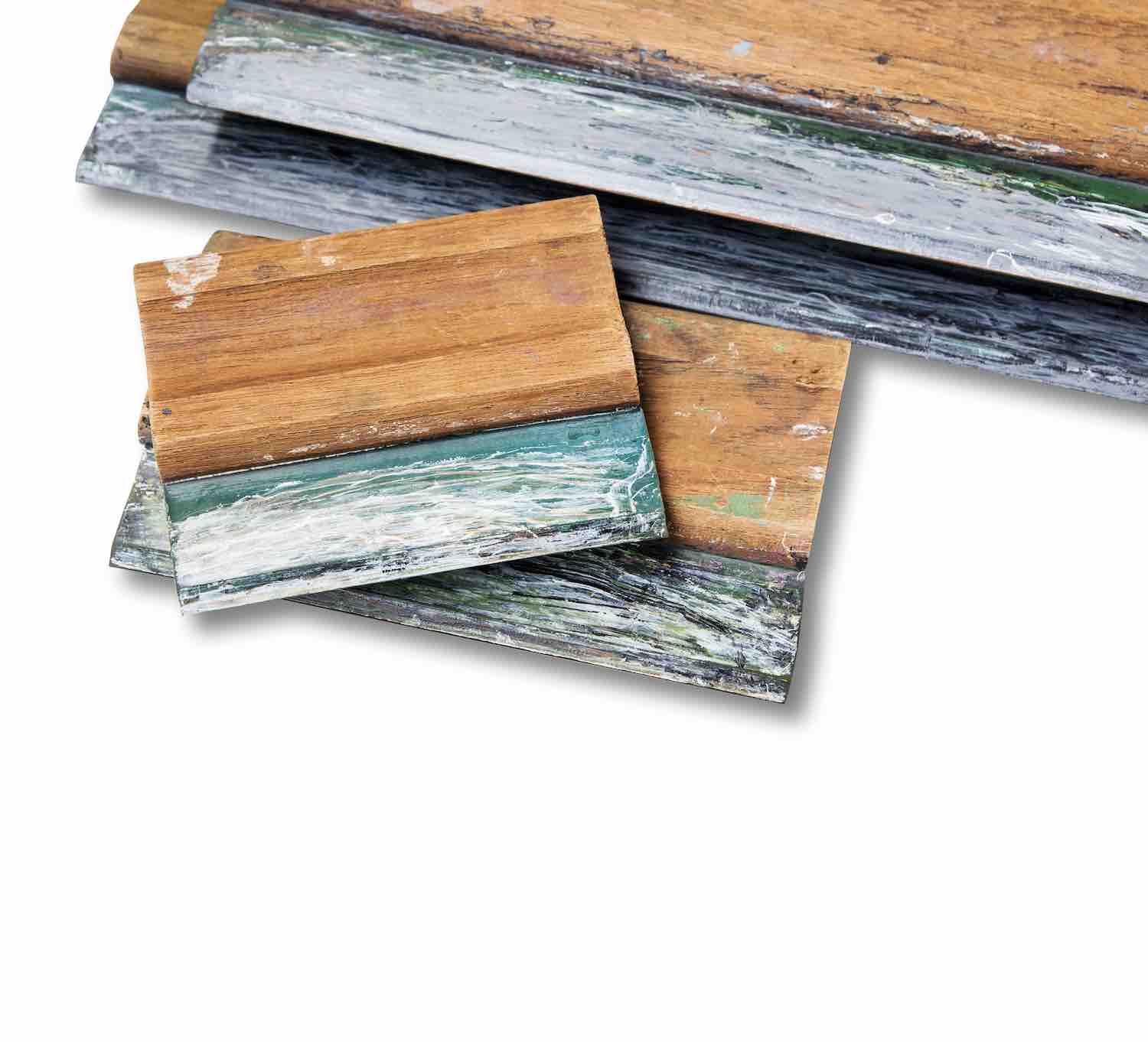An indispensable screenprinting tool that all screen printers know how to use in many creative ways. Here we explain how to choose one and what their different characteristics are.
- In this article:
- What does a screenprinting squeegee consist of?
- How to choose the correct size of screen printing squeegee
- Screenprinting squeegees: is a wooden or aluminium handle best?
- The blade: what is it and how do you choose the right one?
- The blade: how to choose the correct shape
- Final tips
If somebody asked us to name the one absolutely indispensable tool for screen printing, there could only be one answer: the squeegee.
The screen printing squeegee is the tool that enables you to apply ink to the screen, and therefore to print.
The squeegee is absolutely indispensable. All other pieces of equipment, even screens, can be replaced with something that, whilst not entirely professional, can certainly do the job.
The process of applying the ink needs to be done in a particular way and using certain tools.
First of all, let’s get a few things straight right away:
– a squeegee is not a scoop coater. A scoop coater is something else, it’s used to apply emulsion to a stretched screen.
– a squeegee is not a scraper. Scrapers are used for mixing the ink inside the pot, for pouring it onto the screen and for cleaning the screen.
What does a screenprinting squeegee consist of?
There are two components that make up a screen printing squeegee: a handle and a blade (i.e. the rubber part).
If you wish you can actually make your own squeegee: you’ll have to buy the handle in one metre lengths and the blade in rolls of one or more metres, in so doing you can make your own squeegee to the size that you require for the screen you’re using.
However, to make things easier, pre-made squeegees are also available in a range of standard sizes.
How to choose the correct size of screen printing squeegee
The squeegee must be able to slide within the frame of the screen, so it must be smaller than the internal dimensions of the frame. So, before choosing your squeegee, you must first know the exact measurements of your screen!
It’s also important to remember that the squeegee must be approximately 1 or 2 cm (on either side) larger than the design you’re printing.
Screen-printing squeegees: is a wooden or aluminium handle best?
| Handle type | Advantages | Disadvantages |
| Wood | the squeegee is cheaper | the blade cannot be replaced the squeegee may go out of shape |
| Aluminium | the blade can be replaced | the squeegee is more expensive |
The blade: what is it and how do you choose the right one?
The unit of measure for a blade’s hardness is the shore, and it’s important to choose the correct hardness depending on the thread count of the mesh you’re using.
Choose your perfect squeegee: pre-made or to be assembled
The blade: how to choose the correct shape
There are three different types of squeegee blade, they differ according to the shape of their edge: square (straight), round (bull nose) or bevelled (V-shaped).
(photos of different edge shapes)
– the straight edge is the most commonly used, this is particularly useful for ensuring the ink passes through the screen without any “smearing”.
– the round edge is perfect for allowing a significant quantity of ink to pass through the screen, it’s particularly suitable for printing large, uncomplicated designs.
– the bevelled edge is commonly employed when the squeegee is used in conjunction with a printing machine that doesn’t allow any inclination of the squeegee.
- Final tips:
- choose the squeegee size on the basis of the size of the screen and, more importantly, the size of your design
- choose the handle type on the basis of how much the squeegee will be used: a wooden squeegee is cheaper but doesn’t last as long, aluminium is more expensive but lasts a long time
- the standard blade hardness is 75 shore
- the most commonly used type is the straight edge blade

